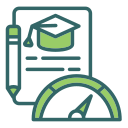Visual Notes and Memory Techniques
Use simple shapes, arrows, and stick figures to illustrate processes or relationships. Combine them with short labels and icons. Visuals spotlight what matters and make review faster. Share a page you are proud of, even if it is messy and minimal.
Visual Notes and Memory Techniques
Translate complex topics into comparison tables, process diagrams, or timelines. Each format highlights different relationships. When choosing, ask what you want to emphasize: contrast, causality, or chronology. The right diagram can halve your study time.
Visual Notes and Memory Techniques
Pick two highlight colors with clear meaning, such as definitions and examples. Use bold for headings and underlines for key formulas. Sparing emphasis creates visual landmarks for memory, while heavy highlighting can blur everything into equal importance.
Visual Notes and Memory Techniques
Lorem ipsum dolor sit amet, consectetur adipiscing elit. Ut elit tellus, luctus nec ullamcorper mattis, pulvinar dapibus leo.








